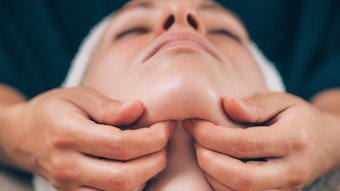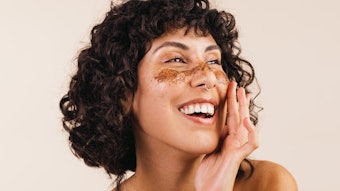
Ethnic skin care specialist Juliette Samuel explains the most important issues when working with darker skin types, and provides tips and tricks for working with ethnic skin.
Although it might seem that daily skin care is a normal routine for most, it hasn’t always been an important factor when caring for skin of color/ethnic skin. Affordability and lack of knowledge have played crucial roles in this lack of knowledge.
Most people show up at a skin care facility after a crisis has occurred with their skin. Typically acne, skin discoloration or keloids are what bring African-Americans to a skin care professional. It becomes important because their appearance is now affected by the skin’s challenge.
Many factors affect the health of a client's skin. When treating the skin of African-Americans or people of color, diagnosing the skin type and condition can cause potential problems because of the variations of the skin's color. In general, the darker the skin's color, the more prone it is to mask or accentuate the problems of the skin. Keloids, thick scars, uneven skin tone/hyperpigmentation are more visible in darker skin.
How do you work with ethnic skin?
Because of the heavy concentrations of dead cells on the surface of dark skin, it has a tendency to reflect light and often gives the skin an ashy appearance. The skin requires care and a skin care regimen should be followed every day at home. At minimum, a professional treatment by a skin care professional should take place once a month.
The most important part of any facial is the consultation and analysis phase; for ethnic skin, this phase is crucial. The skin care professional must examines the condition of the skin and decide how it will be treated.
Every facial has its own unique sequence or regimen because each skin type will require a different step or procedure; however, a basic facial, when given properly, should consist of the following steps.
- Skin consultation and analysis. This determines skin type, analyzes skin problems and determines the course of treatment.
- Deep pore cleansing. This removes dirt and impurities from the skin.
- Treatment. Exfoliation is used to remove layers of dead skin cells. Nutrients are then put back into the skin, using masks and serums that are applied in order to hydrate and/or replenish the skin with moisture.
Ingredients for ethnic skin
The choice of ingredients used is important when caring for any skin type, but with ethnic skin, choices should be well thought-out.
Green tea has been shown to deliver great results when used in ingredients for ethnic skin. When used in a cream base, it typically won’t contain surfactants and detergents that can often cause dryness to the skin. Green tea also has amazing antioxidant properties.
Exfoliants that are overly abrasive should not be used on dark skin; they can cause major damage. Jojoba wax beads when used with a light hand, or fruit acids in low percentages can serve as a more gentle form of exfoliation for ethnic skin. It is crucial to remember that when you exfoliate African-American skin, the slightest scratch or tear in the skin will cause discoloration as it heals.
Nutrition and ethnic skin
Topical products are often looked at as a cure-all to skin challenges with ethnic skin care. However, food and quality of diet also plays an important role in the beauty of the skin. Not only do fad diets and quick weight-loss programs have a negative impact on the skin, but obesity and poor food choices can as well. They can all be detrimental to the health of an individual.
Fruits and vegetables, omega-3 fatty acids, herbs, vitamins and minerals all play an important role in the beauty of the skin.
Caring for ethnic skin
Although it might seem that many people get facials and body treatments, this is not necessarily so within a given ethnic market. Lack of knowledge and the fear of not having the skin taken seriously can keep potential clients away from your facility. In many esthetic and cosmetology schools, the lesson plan doesn’t include a segment of the curriculum for ethnic skin care, so when clients with ethnic skin appear in your spa, it is your job to ensure that they are given the best level of care for their skin. In order to do this, seek out as much training and experience with ethnic skin types and conditions as possible in order to effectively deal with its challenges.
Juliette Samuel is an esthetician and president for NYRAJU Skin Care. She has worked as an instructor at the Fashion Institute of Technology in New York City, and has also been a professional image consultant. Samuel is a member of the National Association of Holistic Aromatherapy (NAHA), the Society of Cosmetic Chemists (SCC), and is the fragrance editor for Bella Online.










